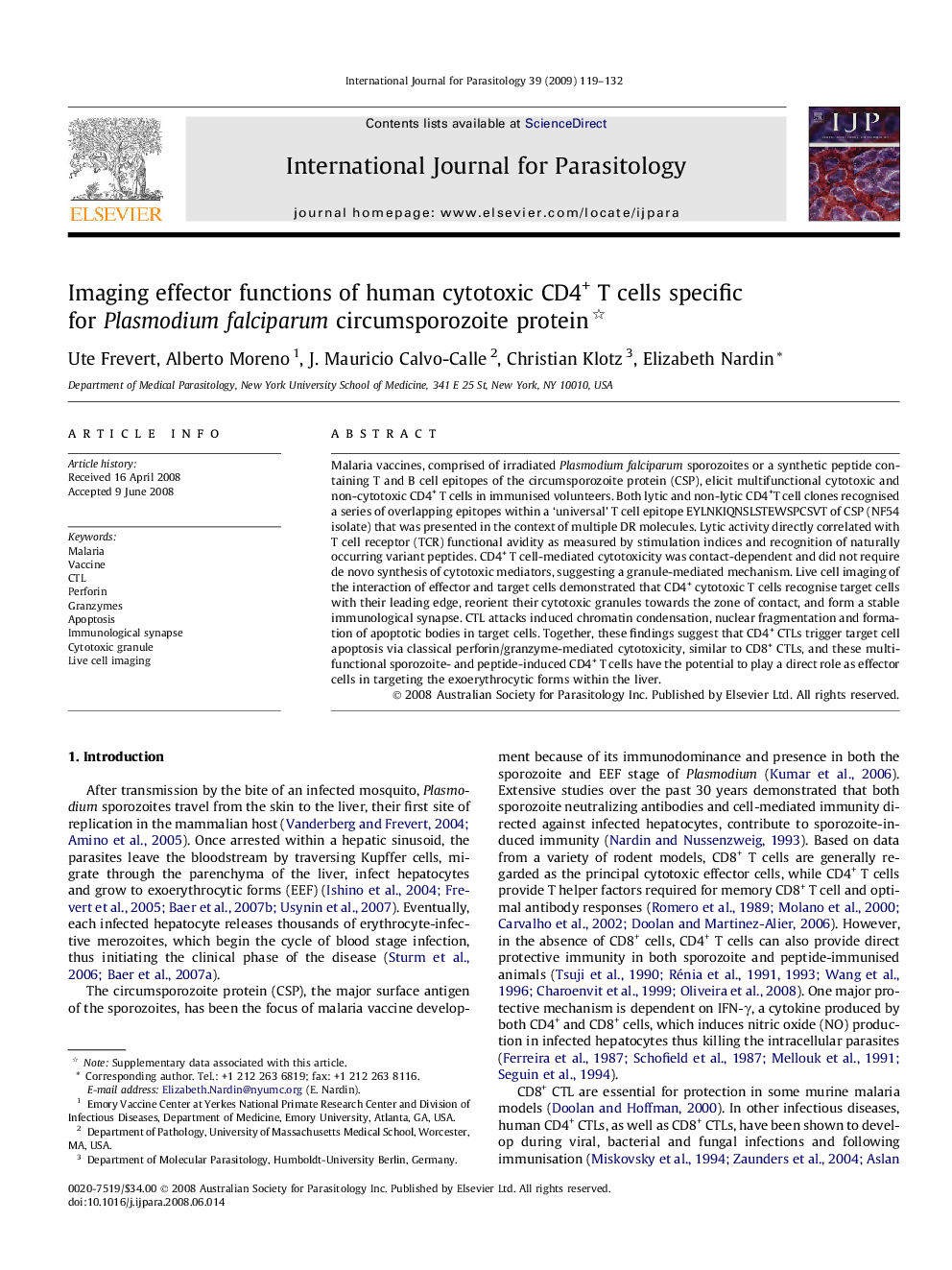| Article ID | Journal | Published Year | Pages | File Type |
|---|---|---|---|---|
| 2436619 | International Journal for Parasitology | 2009 | 14 Pages |
Malaria vaccines, comprised of irradiated Plasmodium falciparum sporozoites or a synthetic peptide containing T and B cell epitopes of the circumsporozoite protein (CSP), elicit multifunctional cytotoxic and non-cytotoxic CD4+ T cells in immunised volunteers. Both lytic and non-lytic CD4+T cell clones recognised a series of overlapping epitopes within a ‘universal’ T cell epitope EYLNKIQNSLSTEWSPCSVT of CSP (NF54 isolate) that was presented in the context of multiple DR molecules. Lytic activity directly correlated with T cell receptor (TCR) functional avidity as measured by stimulation indices and recognition of naturally occurring variant peptides. CD4+ T cell-mediated cytotoxicity was contact-dependent and did not require de novo synthesis of cytotoxic mediators, suggesting a granule-mediated mechanism. Live cell imaging of the interaction of effector and target cells demonstrated that CD4+ cytotoxic T cells recognise target cells with their leading edge, reorient their cytotoxic granules towards the zone of contact, and form a stable immunological synapse. CTL attacks induced chromatin condensation, nuclear fragmentation and formation of apoptotic bodies in target cells. Together, these findings suggest that CD4+ CTLs trigger target cell apoptosis via classical perforin/granzyme-mediated cytotoxicity, similar to CD8+ CTLs, and these multifunctional sporozoite- and peptide-induced CD4+ T cells have the potential to play a direct role as effector cells in targeting the exoerythrocytic forms within the liver.
